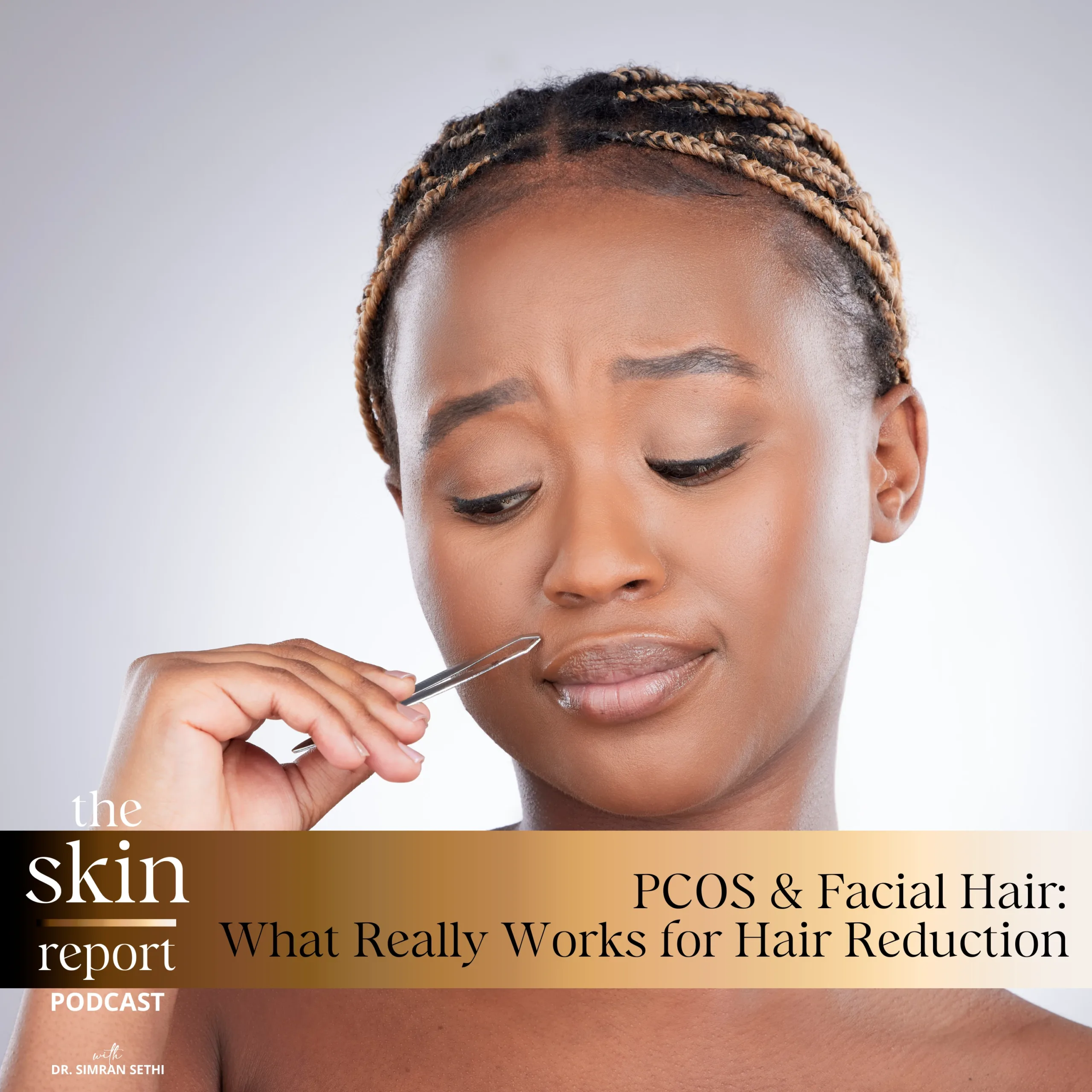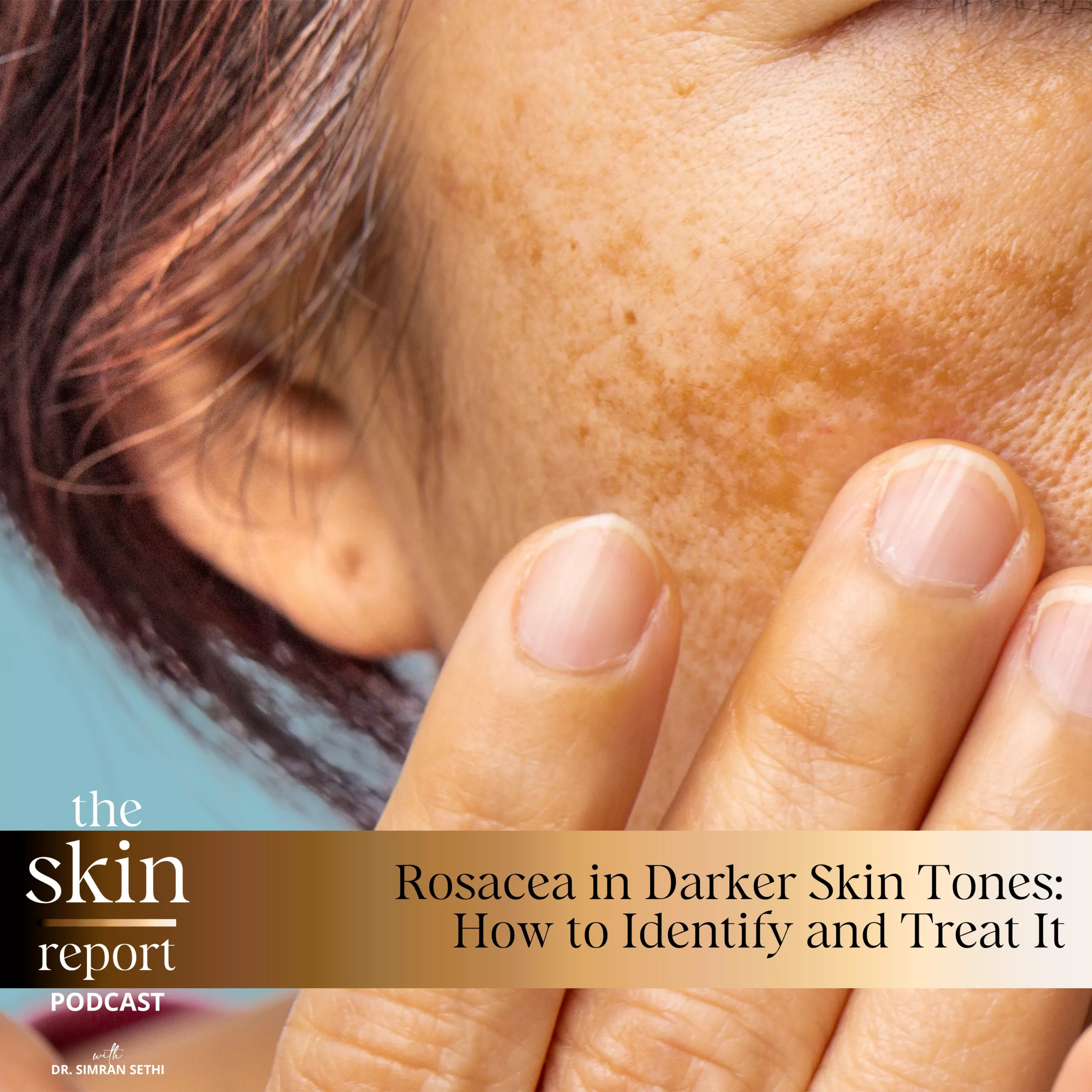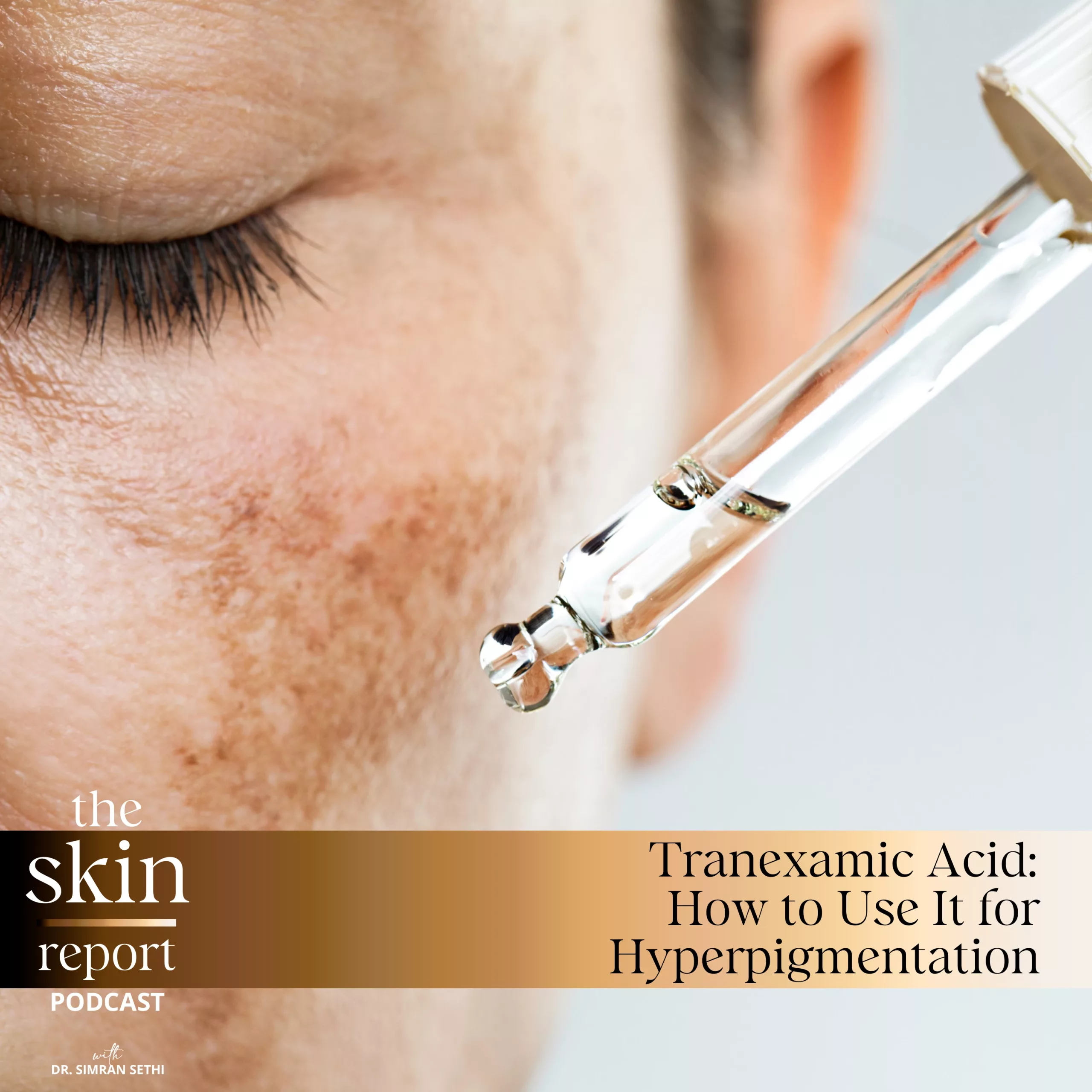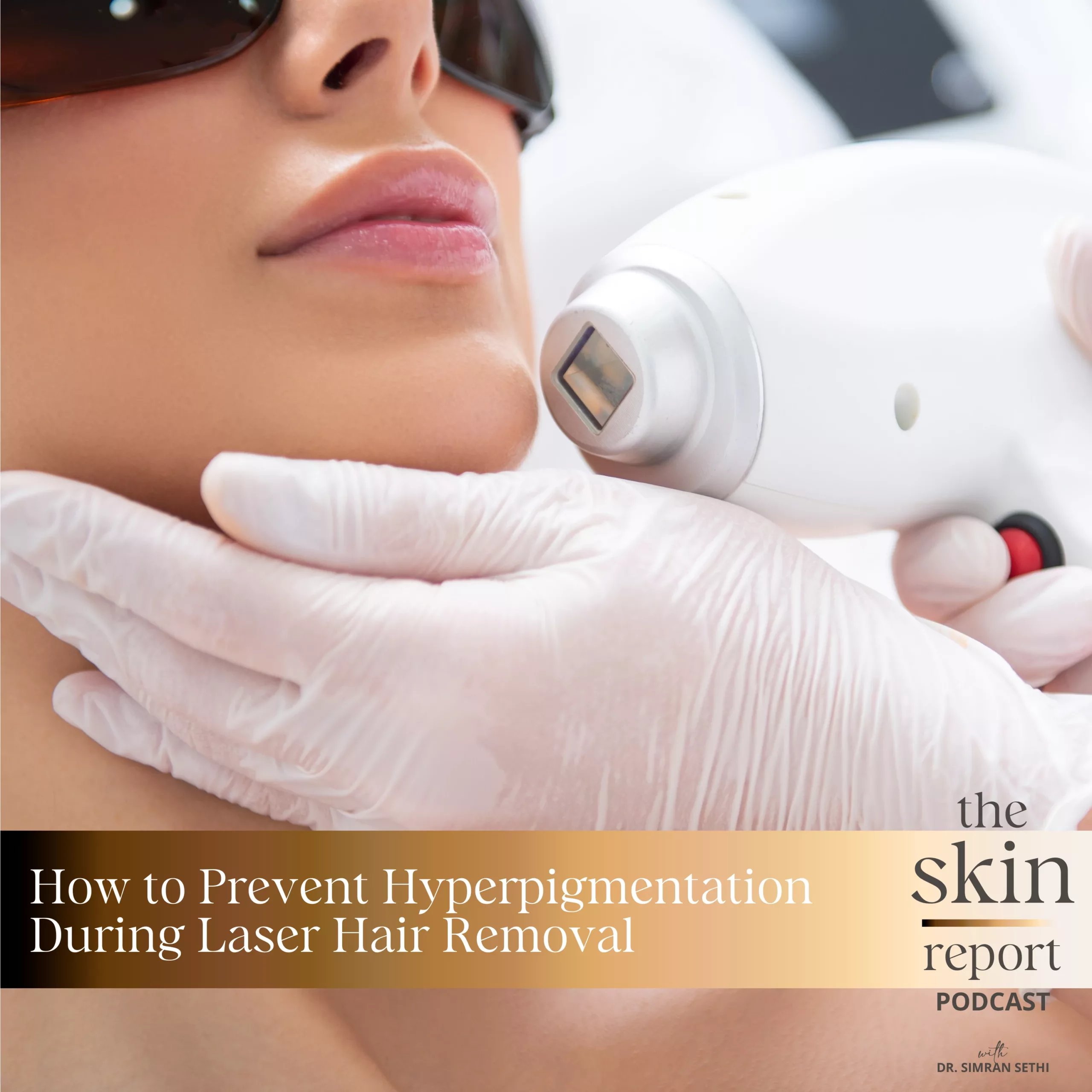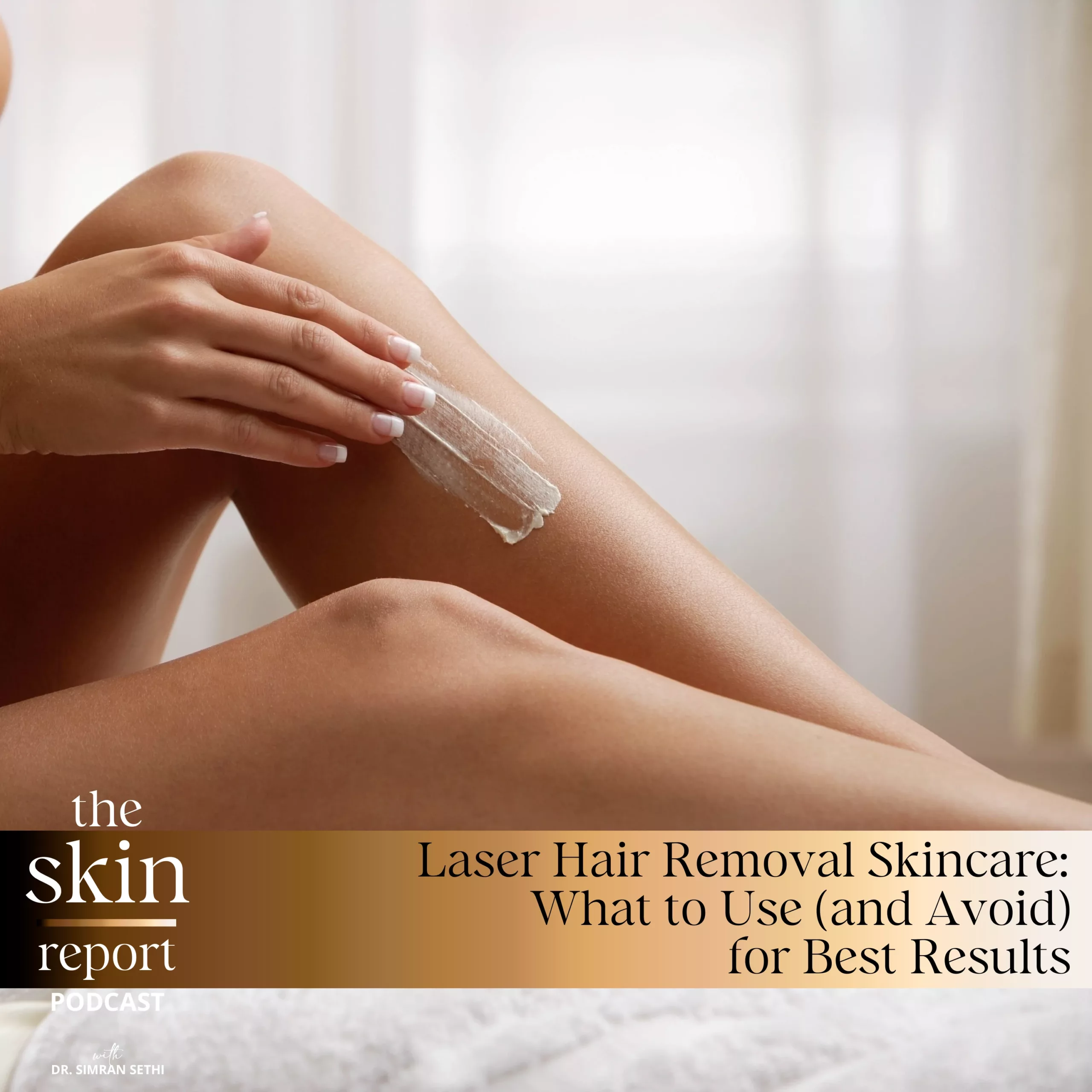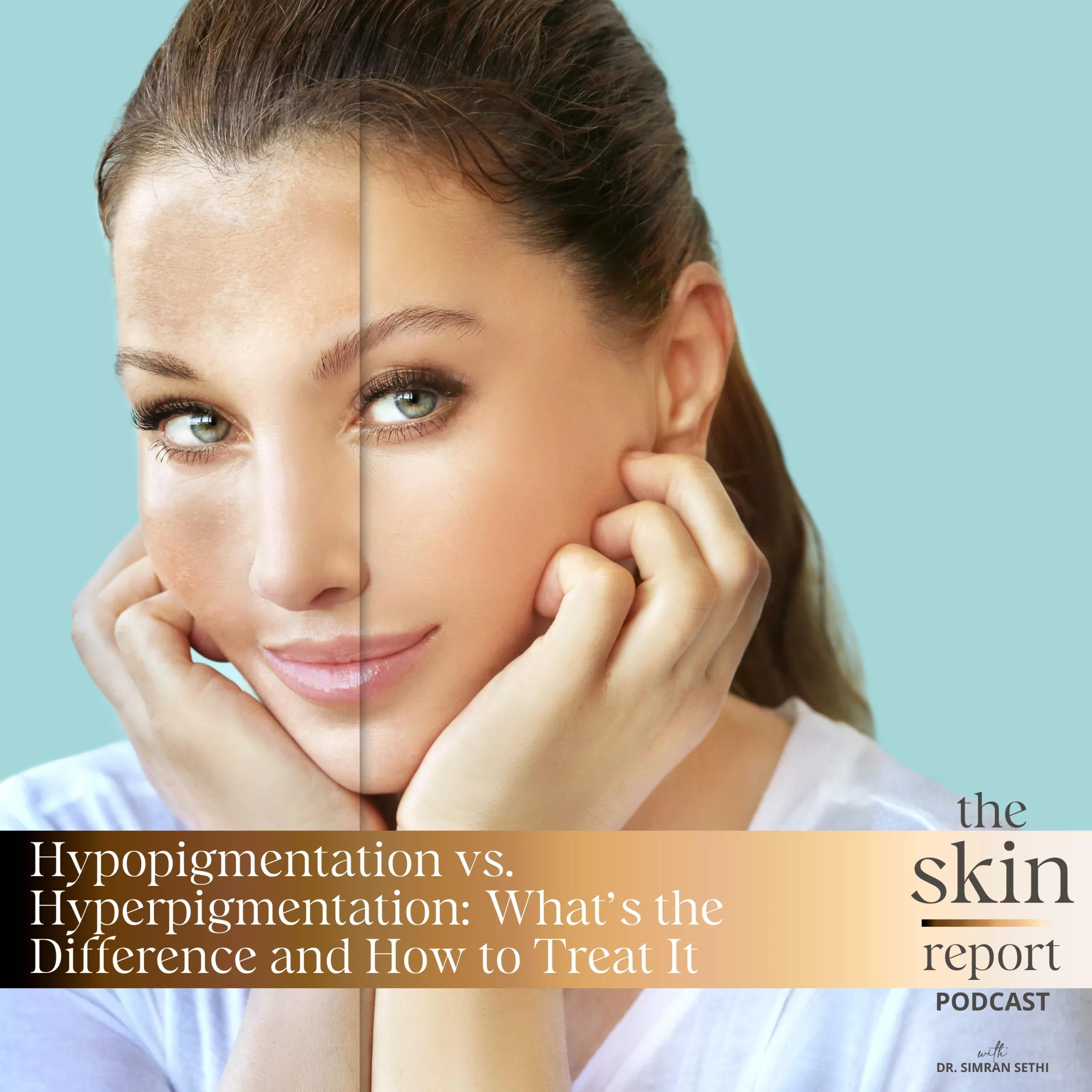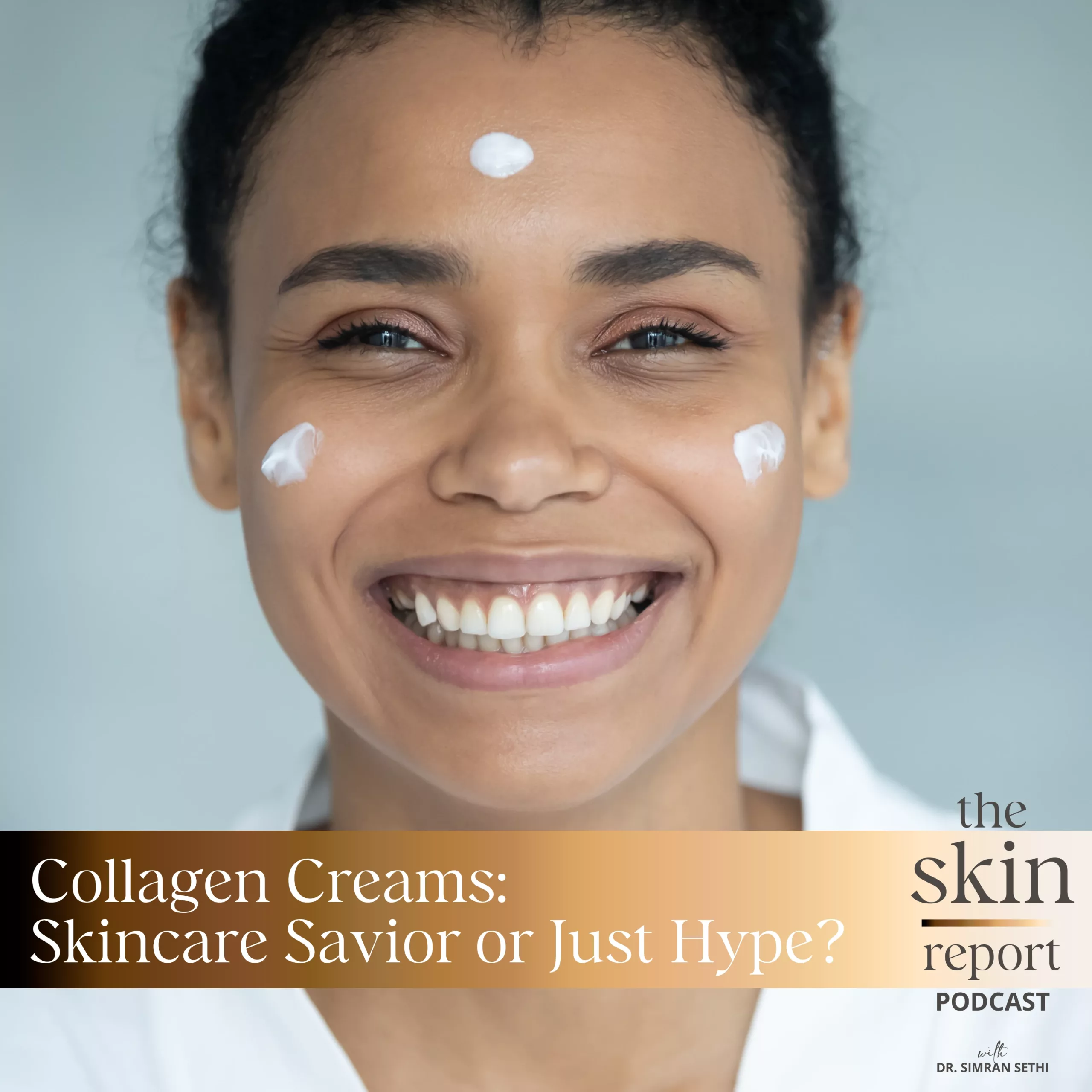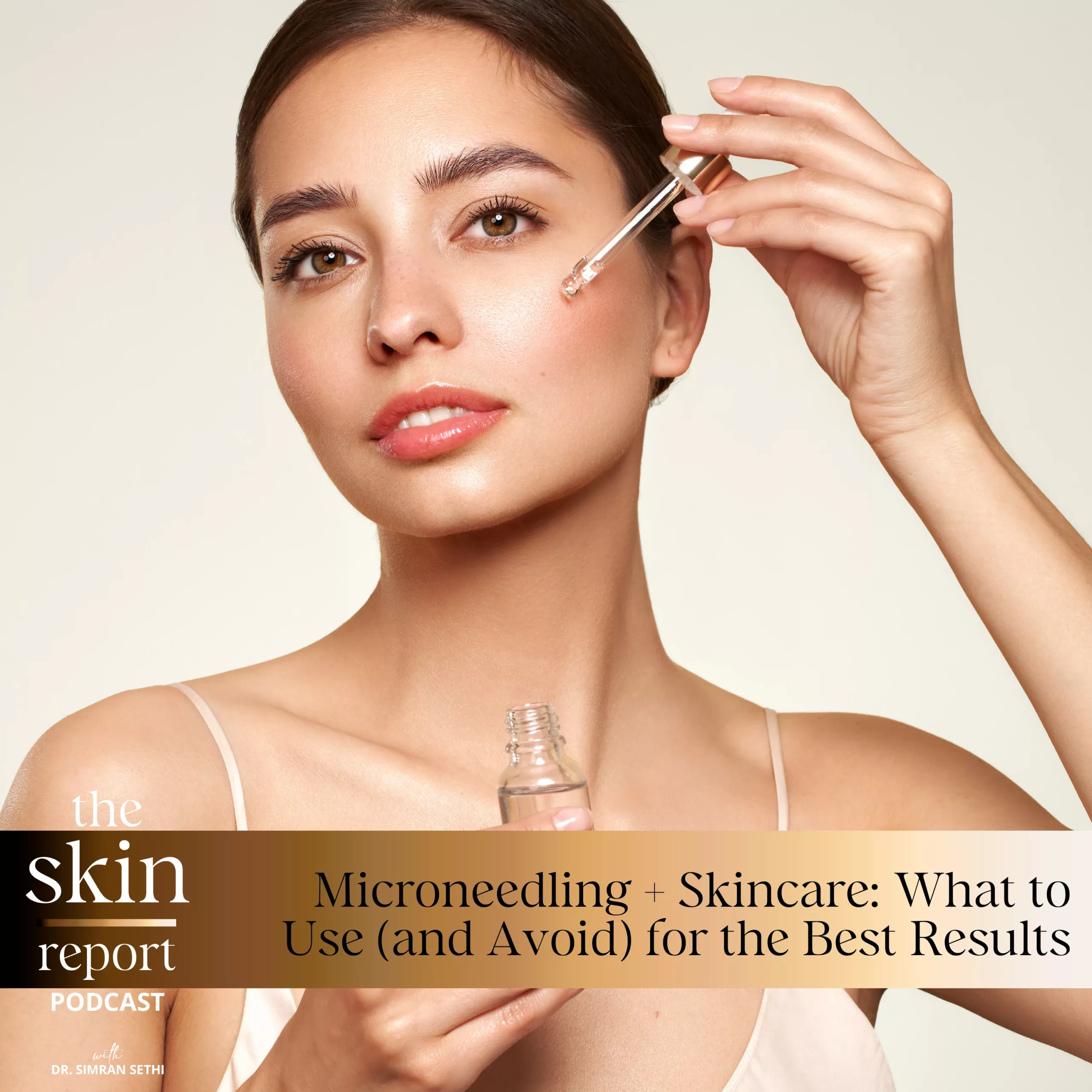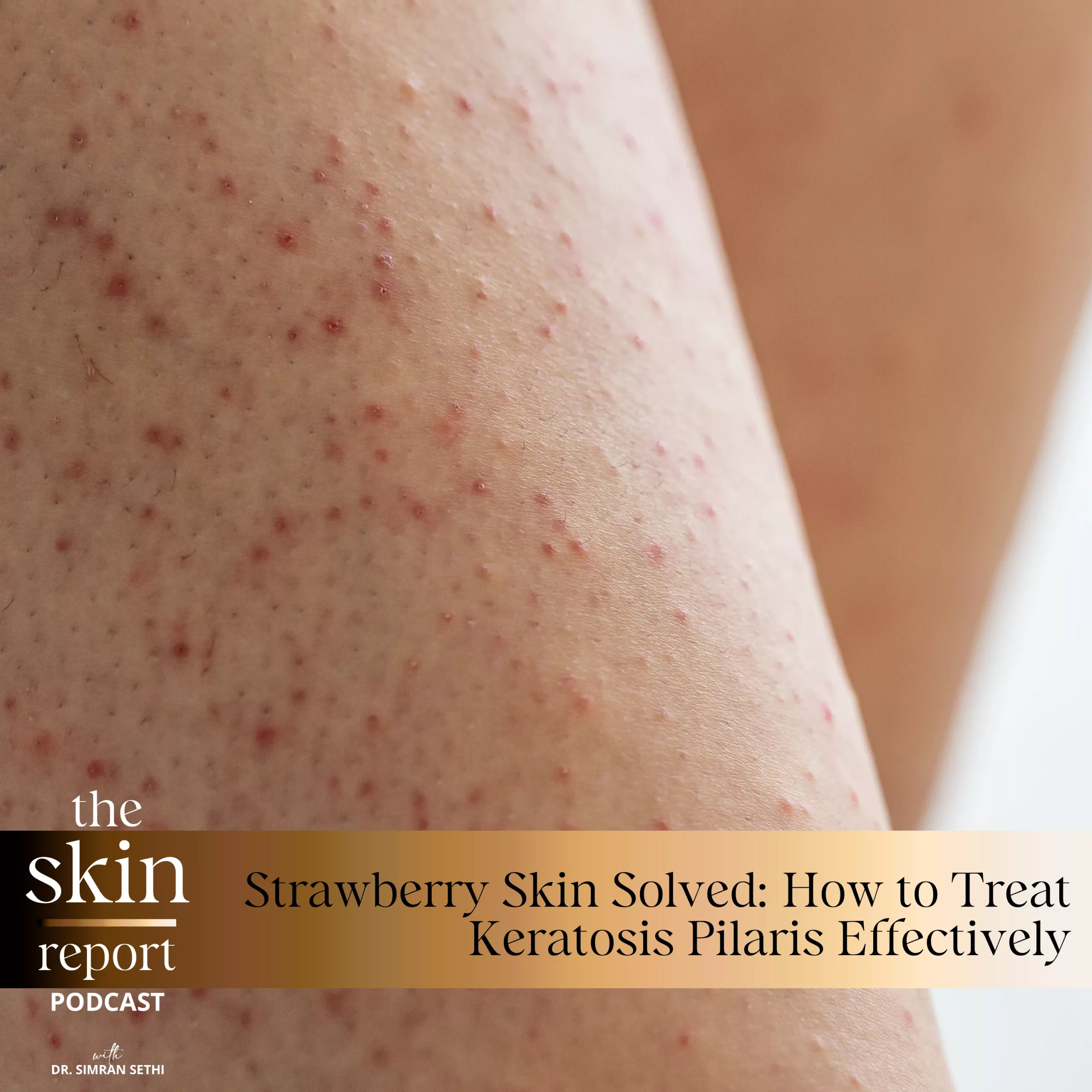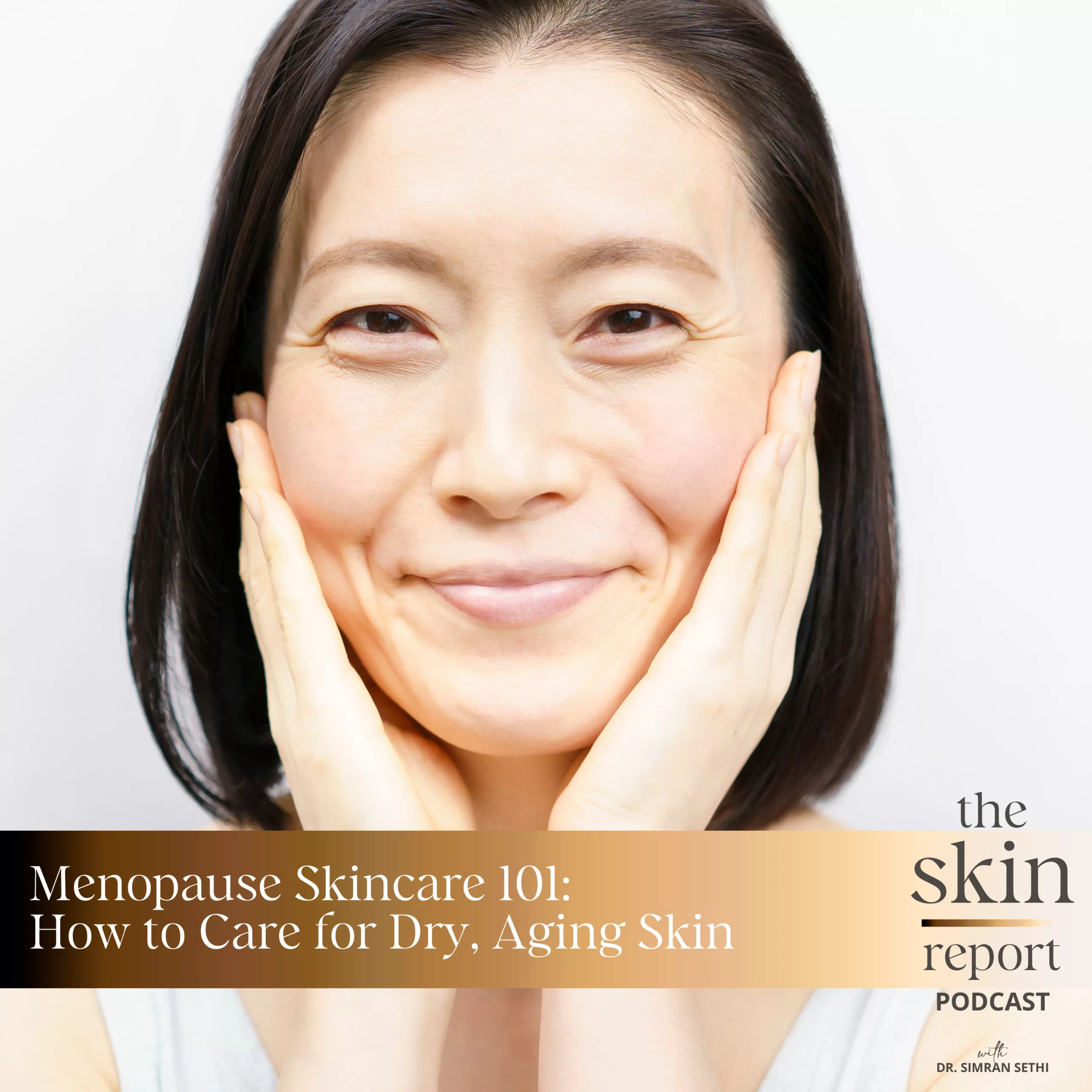With the popularization of TikTok, more people have the opportunity to speak about the skincare methods that work for them. This can be helpful for people looking to gain an honest review of a product or treatment, or so they hope. But on a platform flooded by so many different users and opinions, how can viewers be sure which of these skincare TikTok trends would work for them and which ones are merely a fad?
The Skin Report is a podcast created to educate listeners on methods to improve skin health for people of all ethnicities and ages. This week host Dr. Sethi shares information on the popular TikTok skincare trend – skin cycling. Skin cycling is the practice of changing your nightly routine to incorporate harsher products like retinol and exfoliants more safely into your skin care regimen. This episode teaches listeners the best practices for skin cycling to support the skin’s natural renewal cycle.
Beauty Instagram: https://www.instagram.com/renewmd_beauty/
RenewMD Beauty Medical Spas, California: https://renewmdwellness.com/
This transcript was exported on November 1, 2022 -view latest version here.
Skincare can sometimes feel overwhelming, whether it’s finding the right products, ingredients, or treatments. There’s a lot out there, but not always for women of color. That’s why I set out to educate myself and others so that we can all feel beautiful in our skin. Hello, and welcome to The Skin Report. I’m Dr. Simran Sethi, an internal medicine doctor, mom of three, and CEO and founder of Renew MD Medical Spas and Skin by Dr. Sethi. For the months of September and October, we took a deep dive into specific topics, skin of color and melasma respectively. While we won’t be covering a four part series in November, we will be tackling something else. Skincare trends. Specifically, but not entirely, TikTok trends. Are they true? Are they misinformed? Why do they spread across the entire internet like wildfire? And don’t worry, you don’t need to be on understand my coming episodes. And we can’t start off with the truth behind trends without first talking about one that has swept the internet this summer. Skin cycling.
While the internet has only recently caught onto skin cycling, this scientific approach to skin care treatments, physicians who specialize in skin have used for a long time. So before we get into the trendiness of skin cycling, I’d like to get into its steadiness, what it is exactly, and why it works. As we’ve discussed, ingredients such as retinol are effective anti-aging tools. On the same note, however, they tend to be harsher on the skin, hence why I always suggest a low and slow approach to retinol, only at night, and starting off with using a few times a week and building up to using every other night. So how does this relate to skin cycling? Skin cycling is the practice of changing your nighttime routine over a few day segments to incorporate harsher products like retinol and exfoliants more safely into your skincare regimen. As such, you would use retinol one night along with a cleanser and moisturizer, then on day two, called a rest day, only using the cleanser and moisturizer, an exfoliator and a moisturizer on day three, and take another rest day on day four, making a four day cycle.
In doing so, you would ideally avoid over processing the skin with daily use of chemical exfoliants and high concentration retinols, as these practices can dry out the skin and lead to inflammation and micro tears in the skin. All of the inflammation lies in the epidermis, and in more melanated skin tones will lead to excess pigmentation or dark spots. If you’ve been listening to this podcast for a while now, you may know that the basis of my skincare approach and practice is nourishing the skin cycle. In our very first episode, we discussed the skin cycle, and in subsequent episodes we’ve touched on ways that skincare can help speed up our body’s national process of creating new cells. We are accelerating while nourishing the natural skin renewal cycle, ensuring it runs optimally to correct damage from the sun and pollution while always making new healthy collagen. In doing so, the skin renewal cycle will keep melanin production in a balanced state, just as it does in young, healthy skin, like a baby skin, instead of fighting our melanin production with one product that keeps the whole skin renewal cycle out of balance.<?p>
Now, skin cycling is different. It is a system that prevents over-processing of your skin by the overuse of harsh products that strip the skin of its natural oils and create inflammation and micro tears. So while the renewal cycle is the natural process through which our body makes new skin cells, skin cycling is a skincare approach to prevent over drying. When we return, we’ll talk about why skin cycling is a great approach. Why do I like skin cycling so much? Skin cycling directly addresses the common mistake that consumers make with their skin care routines: more is better. As many skincare product companies don’t sell a routine to their customers, just a random array of items, customers will aggregate their skincare routine from many different products and companies, sometimes being overzealous with their approach. At one point, seven or 10 step skincare routines were all the rage, and while some people need special treatment, like those with skin conditions, the number of products and ingredients being applied to the skin can actually backfire by clogging pores, causing irritation, and more.
However, even if you only use three to four products in your skin, you can still fall victim through the more is better approach. For example, using higher concentrations of retinols and chemical exfoliants, face brushes at the same time the same night can be more harmful than helpful. I have found so many clients use two chemical exfoliants, a face brush, and the highest strength retinol all in one night daily because they got each of their products from different companies and had no idea how to combine this. As we say at the beginning of every episode, skincare can feel overwhelming and I wanted to take away that feeling, as feeling overwhelmed and confused can lead to this over processing of skin with duplicate steps and harsh products. For women of color, this over processing can be even more damaging as it can lead to hyperpigmentation, acne scars, and more.
In fact, I had this very experience myself. Before understanding what I know now, I did exactly what my patients did, target dark spots with high dose vitamin C, which made my skin red and sensitive. I would then follow up with the highest strength retinal, which made me peel, and because I was peeling constantly, I would wash my face daily with a scrub thatI felt I needed. However, the face scrub was just making my already inflamed and weak skin barrier now have micro tears, which further exacerbated abnormal melanin production. Yes, my skin was dull and uneven, but was the problem just mine? After working with thousands of women of color, women from South Asian and Asian descent in my medical practice, women just like me, I found that we were all taking the same approach and failing miserably. Once I properly understood the active ingredients that fortify each step of the skin renewal cycle, I found that suddenly dark spots or hyperpigmentation magically disappeared. Skin had a beautiful glow and plumpness to it, and it felt so much smoother.
Because I experienced over processing myself and saw, and still see, so many patients in the clinic with this situation, I decided to take a different approach with my medical grade skincare line. We’ll talk about that when we return. When it came to formulating and organizing my skincare line, I knew what I wanted to do to address overwhelm and over processing of skin. I created a system’s baseline to help achieve healthy and radiant skin. To this day, it’s the only medical grade line that does this. My patients all know that a skin routine and system is non-negotiable when they enter my practice, as I cannot deliver results if our daily skin diet is not optimal. I like to use the analogy of a plate of food. How many times have you heard that you need carbs, proteins, fats, fiber, and vitamins to make a healthy diet? If you mostly consume protein, you would likely sacrifice fiber and feel bloated and constipated. If you largely ate carbs, you would have a sugar spike and then your energy would crash. A high fat diet would likely, again, make you bloated and constipated.
All of these dietary extremes lead to imbalances because all the macronutrients play an important role in our body’s digestion and energy conversion. Skin renewal works the same way. We cannot down-regulate, or undernourished, or up-regulate, over-produce parts of the skin cycle to correct an issue. A singular approach, like only reducing carbs to lose weight, will lead to an imbalance guaranteed. This imbalance will get in the way of a healthy glow because it will affect every step of the skin renewal cycle. So how does all of this relate to skin cycling? As most skincare lines aren’t system based, skin cycling is a good approach to help mitigate over-processing of the skin. You may recall from the beginning of the episode that skin cycling is a four day nighttime skincare routine that incorporates exfoliants on the first night, retinol on the second night, followed by two nights of recovery. A popular TikTok that outlines this four night routine amassed more than two and a half million views and counting.
This is a good guide, but I actually recommend a modification. For night one use a cleanser, exfoliant, and moisturizer. Night two is your recovery night. Night three is a repeat of night one: cleanse, exfoliate, moisturize. And night four is recovery again. I believe in splitting up the active nights with recovery nights because this gives the skin that extra rest no matter what your skin type is, and still delivers all the active ingredients needed in the routine. I would like to mention that in my skincare, we skin cycle with my skin polish to every other night. The skin polish is a botanical exfoliant combined with a mechanical micro-exfoliant, and I will include a link of that product in the show notes. Whether you follow a skin cycling routine that alternates the active nights with recovery ones, exfoliants or retinols should not be used on the same night if you’re just starting retinol.
I also want to say that retinol is safe to use daily once you’ve used it every few nights in the first few months of starting. This is because we build up to the retinol, and mine is a medium 0.5% strength with a lipid complex to act as a moisturizer or skin barrier builder. For people undergoing skin procedures, we recommend doing the recovery routine a few days before the procedure and one week post procedure to allow for optimal skin recovery. I understand why skin cycling has become very trendy, and recognize it’s a great practice to maintain and strengthen our skin barrier. However, like with many trends, one solution does not fit all. When we return, I’ll distinguish how skin cycling can be better altered to fit different skin types, tones, and ages. While I think skin cycling is a good start, it may sometimes be too gentle for certain skin types. For example, people with acne prone skin, whether that’s because it’s oily skin, young skin often need a mild chemical exfoliant daily for a few months until their acne has calmed down.
If they were to skin cycle, they may not get enough cleansing of their pores to prevent breakouts. Once their breakout frequency has been corrected after a few months, they can skin cycle, but just skin cycling initially will not address active acne in many cases. Another example would be para-menopausal women. As we’ve discussed before, our skin becomes drier as we age, and we should adjust our skin care routine accordingly. Women with dry skin may need an additional recovery day. The seasons will also impact what works best for our skin. The winter months tend to be colder and drier, and we spend more time indoors with the heating. As a result, our skin can dry out and we should allow for an additional recovery night. Even those with typically oily skin may find they need to be gentler as the weather changes. The reason why I want to specify how skin cycling can look for different types is because this doesn’t have to be a fad. Skin cycling can become a sustainable skincare practice if done properly. The first step to knowing the best skin cycling for you is to truly understand your skin type.
Are you acne-prone and very oily? This may mean that you don’t have any or fewer recovery days for at least a few months until your acne has calmed down. Are you in your forties or fifties and experiencing very dry and dull skin? You may need more recovery days. If you’re skin cycling, your skin can usually handle more active ingredients and impactful ingredients. You’ll find more success in using medical grade products, and those that are medium grade as well, such as a 0.5% retinol and medium strength exfoliant. I’m not supporting the use of the highest strengths here, but don’t think you need to go to the lowest strength of products either. Again, much of this depends on your skin type. I think we all have an idea of what skin type we are, but as we know, skin needs can change over time and with the seasons. That’s why it’s especially important to get an objective and up to date analysis of your skin. In fact, having this understanding is the basis for all of your skin care.
You can always do this from the comfort of your home by going to my skin scan on skinbydrsethi.com where I’ve created a proprietary algorithm that’ll analyze your skin at its deeper levels and provide a detailed skin analysis with recommendations on the types of products that will optimize your skin and give you a natural glow. If you’d like to learn more about science backed skincare or medical aesthetic treatments, please subscribe to and turn on notifications for The Skin Report so you always know when a new episode is up. We have a newsletter that you can sign up for on theskinreportbydrsethi.com so that you can stay up to date on all our new episodes, blogs, products, and more. Additionally, if you have a skincare question or want to make an episode topic recommendation, please message me at renewmdwellness.com, which is linked in my show notes, and I’ll be sure to answer your question in an episode soon. Thanks for listening, and until next time. Love the skin you’re in and celebrate your beauty.
Transcript by Rev.com


